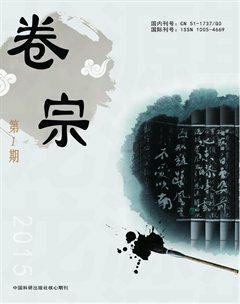A Study on a Inductor Simulation by PExprt
S.E. Cho 1?S.J. Park 2
Abstract: Recently, there has been increasing demand for power conversion system. The input current of THD for power conversion system has affected the quality of current. To improve this, the study of inductor has been booming.
This inductor is the reason of noise, also it is a component which affects convertors size and heat. To solve this, by using the PExpert program of ANSOFT, it is possible to design the convertor optimized for the product. This study has simulated several kinds of inductor by using PExpert. In order to select the optimized inductor for the system, weve simulated inductors power losses, core losses, wire losses, and temperature rise according to its type.
Keyword: DC-DC Converter ,Power Loss, PExprt, Simulation, Temperature
Introduction
We originally designed inductor and transformer with formulation. We should consider a lot of
variables such as the material of core, the size of air gap, the capacitance between coils and etc,
when we are designing inductor and transformer. However, we cannot consider this by
formulation. Thus, we go through several times of trials and errors to make inductor or
transformer which has needed specific characteristic.[1] We have designed inductor, multi winding
transformer, coupled inductor by using PExpert. By using these simulations we optimized core size,
core material, the number of turns, the length of air gap, the diameter of electric wire. PExpert
simulation also calculates winding losses, core losses, DC/AC resistance, valid current, excited
inductance, leakage inductance, fringing flux around air gap. The designing and building
procedure of inductor and transformer are difficult. This study has designed inductor and
transformer by using PExpert of Ansoft, one of the designing tool for transformer and inductor.
As designing tool for transformer and inductor, PExpert of Ansoft helps easier and precise
designing of those.
Main subject
PExpert of Ansoft help easier and more precise designing , as designing tool of transformer and
inductor. Table1 is designing specification of BUCK Converter. We have simulated various kinds
of inductor to optimize the best inductor that suits the designing specification of table1.
Table 1. Specification of design for Buck converter
Input Voltage [Vpeak] 150
Switching Frequency [kHz] 100
Out Voltage [Vpeak] 25
Inductance [uH] 250.10
Power [W] 100
Inductor current ripple[mA] 833
Inductor average current[A] 4.0
Conduction mode Continuous
Duty cycle[%] 16.7
Conduction mode Continuous
Figure1 is applied circuit and waveform.
Fig. 1. Circuit and waveform of buck converter.
Figure 2 is design input of converter. Weve considered Gap position as central leg, Geometry as
Concentric component, and Gap as Fringing Gap Energy when we simulate the inductor.
Maximum Temperature is 200 deg. Maximum parallel turns are 3. Ambient Temperature is 25 deg.
Figure 3 shows the properties of inductor core. (a) is Jiles Atherton Hysteresis Curve of core(PC40).
(b) shows the parameter of Core (PC40) losses. (c) shows the electric properties of Core (PC40)
In Modeling option, Windidng losses calculation is harmonics and AC resistance(skin), number of
harmonics is 32. We used Steinmetz formula for Core losses calculation. Figure 4 is shape and
dimension properties of PQ26/25-Z12.
Figure 5 is properties of wire that are applied to inductor.
Figure 6 is constructive drawing of simulation inductor.
Figure 6 represents the AC resistance of inductor wire according to its frequency.
Figure 7 shows inductor current according to its frequency.
Figure 8 shows distribution of inductor temperature according to distance. Max. temperature : 41.58 deg. Core temperature : 40.13 deg.
Core losses calculation using Steinmetz equation. Figure 9 is Performance results at PQ26/25-Z12, AWG19, 37turns, 1 parallel turn. Core losses calculation using Steinmetz equation
Core losses[W] = vol[m^3] * k * f[Hz]^alpha * B[T]^beta --------------(1)
Where, f(frequency):100[kHz], vol(volume): 6549[mm^3], B(flux density):23.86[Mt], k : 0.32
Alpha : 1.61, beta : 2.68
Core losses : 10.554[mW]
DC winding losses calculation.
Dc winding losses[W] = Rdc[ohm] * Irms^2 ----------------------------(2)
Rdc[ohm] = resistivity[ohm*m] * length[m] -----------------------------(3)
Where, DC resistance per turn : 1.64[mohm],
DC resistance per parallel branch[37 turn] : 60.688[mohm],
Total DC resistance : 60.688[mohm], parallel turn : 1, Irms : 4.007[A].
DC Losses : 974.511[mW].
Window filling : 34.38[%], window rate : 68.40[%], current density : 6.16[A/mm^2]
Figure 10 shows the result of simulation in window filling, power losses, temperature etc when we changed wire into awg19,22,25,28,31 in PQ26/25-Z12 core, and parallel turns changed into 1,2,3.
In this case, if we consider temperature and power loss and etc, we can find out that the case of PQ26/25-Z12 core, AWG19, 37turns, 1 parallel turns is the optimized option.
3. Conclusion
The part that this study covers with simulation is inductor.
It is possible to design optimized inductor not only by analyzing the reason of temperature rise, noise from structure and topology but also by calculating the inductor capacity that are required by the system. We have optimally simulated inductor which can be applied to normal form of power conversion system. With this study, It is possible to industrialize minimization of inverter/convertor size and optimization of those by enabling the loss optimization of inductor which affect the size of power conversion system.
Acknowledgement
The present research has been conducted by the Research Grant of Seoil University in 2012.
Reference
[1] ] Su-bin Han, “Status and Using of CAD program for Transformer / Inductor Design”, KIPE
Magazine, pp.31-35, 2006. April.
[2] Marlin O. Thurston, “Transformer and Inductor Design Handbook“, Marcel Dekker, Inc.
[3] Ansoft Korea Homepage,"http://www.ansoft.co.kr/html/pro/pe.php"
作者简介
S.E. Cho
Department of Electrical Engineering, Seoil University Korea
Seoil University gil 22 Jungnang-Gu, Seoul, Korea
S.J. Park
Department of Electrical Engineering, Chonnam National University Korea
Yongbong-ro 77, Bug-gu, Kwangju, Korea

